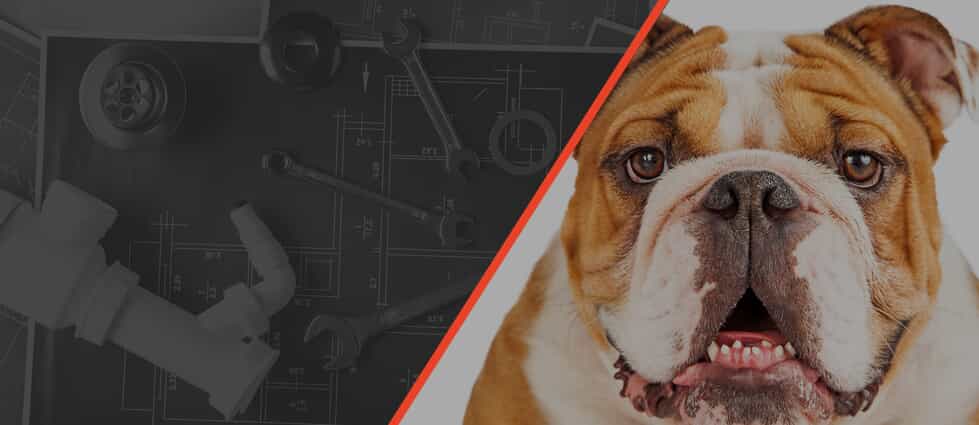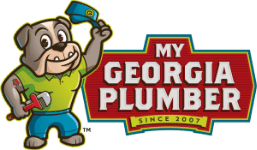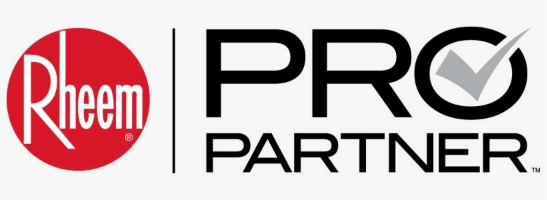
This is the continuation of a series of columns covering only the code changes that were approved as submitted from 2018 to the 2021 International Plumbing Code (IPC) change hearings. There were many code change proposals and two rounds of code hearings for the 2018 IPC. The following is a summary of the significant code changes that were approved during the International Code Council hearings in Columbus, Ohio, and Richmond, Va.
These code changes will appear in the 2021 edition of the International Plumbing Code, which will soon be published and available for jurisdictions to consider for adoption. Because it is possible for modifications to the proposed text to be made from the floor during the code hearing process and multiple code changes were made to the same code section, which will require ICC staff to develop the final text for a given code section incorporating all the changes, I recommend you refer to the 2021 IPC for the final version of any code changes reported on hereinafter.
Proposed additions are underlined and deletions are struck through. They are followed by the proponents’ published reason statements, along with any of my comments, as noted.
Code Change: IPC Table 702.4, 705.2.4, Chapter 15
Note: Parts of the list in Chapter 15 and the tables in Chapter 7 that did not change are not shown.
Revise Chapter 15 Referenced Standards to add new text as follows:
A112.4.4-2017:
Plastic Push Fit Drain, Waste, and Vent (DWV) Fittings
Add new text as follows:
705.2.4 Push-fit joints.
Push-fit joints shall conform to ASME A112.4.4 and shall be installed in accordance with the manufacturer's instructions.
Revise table 702.4 as follows:
TABLE 702.4
PIPE FITTINGS
| MATERIAL | STANDARD |
| Acrylonitrile butadiene styrene (ABS) plastic pipe in IPS diameters | ASTM D2661; ASTM F628; CSA B181.1;ASME A112.4.4 |
For SI: 1 inch = 25.4 mm.
Proponent’s reason statement: Adding this section along with the consensus standard for push-fit DWV fittings will give code officials direction on inspecting push-fit fitting installations and installers direction on installing push-fit fittings.
Adding this section is consistent with the “push-fit joints" sections in chapter 6.
My comments: This proposal is not mandating push-fit joining methods; it is simply adding it to the list of approved joints and the table for pipefitting materials. This code change is just adding push-fit drainage fittings as an option in the code.
Code Change: IPC Sections 708.1, 708.1.6
Add new text as follows:
708.1.6 Cleanout equivalent.
A fixture trap or a fixture with integral trap, removable without altering concealed piping, shall be acceptable as a cleanout equivalent.
Revise text as follows:
708.1 Cleanouts required.
Cleanouts shall be provided for drainage piping in accordance with Sections 708.1.1 through 708.1.11 708.1.12.
Proponent’s reason statement: This is a companion change to the 2018 IRC subsection reintroduction of cleanout equivalents that was mistakenly left out during the reorganization of the cleanout section in the 2015 IRC. This is a viable option for cleanout equivalents in the IPC as well, which is why the addition of the language is being proposed to match the IRC language.
My comments: This code change allows fixtures such as water closets to be removed and utilized as a cleanout. This was allowed in the past and this simply reverts back to the prior position in an effort to reduce the cost of construction by allowing a water closet to be removed and used to clean out the drain. This is in lieu of requiring the installing a separate cleanout fitting.
Code Change: IPC Section 717
Add new text as follows:
SECTION 717
RELINING BUILDING SEWERS AND BUILDING DRAINS
717.1 General.
This section shall govern the relining of existing building sewers and building drainage piping.
717.2 Applicability.
The relining of existing building sewer and building drainage piping shall be limited to gravity drainage piping, 4 inches (102 mm) in diameter and larger. The relined piping shall be of the same nominal size as the existing piping.
717.3 Pre-installation requirements.
Prior to commencement of the relining installation, the existing piping sections to be relined shall be descaled and cleaned. After the cleaning process has occurred and water has been flushed through the system, the piping shall be inspected internally by a recorded video camera survey.
717.3.1 Pre-installation recorded video camera survey.
The video survey shall include verification of the project address location. The video shall include notations of the cleanout and fitting locations, and the approximate depth of the existing piping. The video shall also include notations of the length of piping at intervals no greater than 25 feet.
717.4 Permitting.
Prior to permit issuance, the code official shall review and evaluate the pre-installation recorded video camera survey to determine if the piping system is capable to be relined in accordance with the proposed lining system manufacturer's installation requirements and applicable referenced standards.
717.5 Prohibited applications.
Where review of the pre-installation recorded video camera survey reveals that piping systems are not installed correctly or defects exist, relining shall not be permitted. The defective portions of piping shall be exposed and repaired with pipe and fittings in accordance with this code. Defects shall include, but are not limited to, backgrade or insufficient slope, complete pipe wall deterioration or complete separations such as from tree root invasion or improper support.
717.6 Relining materials.
The relining materials shall be manufactured in compliance with applicable standards and certified as required in Section 303. Fold -and-form pipe reline materials shall be manufactured in compliance with ASTM F1504 or ASTMF1871.
717.7 Installation.
The installation of relining materials shall be performed in accordance with the manufacturer's installation instructions, applicable referenced standards and this code.
717.7.1 Material data report.
The installer shall record the data as required by the relining material manufacture and applicable standards. The recorded data shall include but is not limited to the location of the project, relining material type, amount of product installed and conditions of the installation. A copy of the data report shall be provided to the code official prior to final approval.
717.8 Post-installation recorded video camera survey.
The completed relined piping system shall be inspected internally by a recorded video camera survey after the system has been flushed and flow tested with water. The video survey shall be submitted to the code official prior to finalization of the permit. The video survey shall be reviewed and evaluated to provide verification that no defects exist. Any defects identified shall be repaired and replaced in accordance with this code.
717.9 Certification.
A certification shall be provided in writing to the code official, from the permit holder, that the relining materials have been installed in accordance with the manufacturer's installation instructions, the applicable standards and this code.
717.10 Approval.
Upon verification of compliance with the requirements of Sections 717.1 through 717.9, the code official shall approve the installation.
Proponent’s reason statement: To date, there has been limited to no code reference for all the technologies currently available to reline piping systems. Many localities across the country are accepting it as an alternate material and method with no code guidance.
This proposal is not an endorsement of any particular method or process. It does not promote or require relining. It simply provides installation and acceptance criteria when the application is encountered. This language will provide consistent application for all materials and technologies for the industry, including the code official and installers alike.
Pipe relining technology has been successfully used for many years. It began with larger utility piping systems and has progressed into smaller piping systems that are privately owned and fall within the purview of the plumbing code. The process reduces the impact of open trench excavations and thereby reduces repair cost according to industry data.
My comments: This code change includes language and a reference standard on relining existing building sewers and building drains. Many building sewers with corrosion issues or leaking joints must have the building floor sawcut, removed and replaced with new pipe. This new code language gives a building owner a less expensive and less disruptive option of relining the sewer.
There are several relining options and there is a new industry standard approved for relining sewers. This code change now allows relining as an approved option to removal and replacement. The referenced standards, ASTM F1504-2014 and F1871-2011 in section 717.6, were already referenced in the 2018 International Residential Code. This code change was to allow slip-lining of sewers in the International Plumbing Code.
Code Change: IPC Section 717 (New), Chapter 15
IPC Sections 717 (New), 717.1 (New), Chapter 15
My comments: This code change proposal — as with many others code changes that added new language to the end of a code section and continued with the numbering that was published in the prior edition of the code — will have many new code change proposals submitted with the same proposed code section number. As other proposals are submitted to a code section, they are renumbered by ICC staff in a logical order.
ICC staff will renumber the code sections that get approved after the final vote on the code commentary hearings. The above code was also numbered 717 as was the previous code change. Printed below is the code change as it was submitted and the code change as it was renumbered and reworded to follow the format of the previous code language on this subject.
The proposed and new code language is as follows:
Add new text to Chapter 15 – Referenced Standards:
F2599-16: Standard Practice for The Sectional Repair of Damaged Pipe By Means of An Inverted Cured-In-Place Liner
F2561-17: Standard Practice for Rehabilitation of a Sewer Service Lateral and Its Connection to the Main Using a One Piece Main and Lateral Cured-in-Place Liner
F3240-17: Standard Practice for Installation of Seamless Molded Hydrophilic Gaskets (SMHG) for Long-Term Watertightness of Cured-in-Place Rehabilitation of Main and Lateral Pipelines
Add new text as follows:
717 BUILDING SEWER AND SEWER SERVICE LATERAL REHABILITATION
717.1 Building sewer and sewer service lateral rehabilitation.
Any rehabilitation of building sewer piping and sewer service lateral piping shall be in accordance with ASTM F2599. Any rehabilitation of building sewer and sewer service lateral pipe and its connection to the main sewer pipe shall be in accordance with F2561. All rehabilitation of building sewer piping and sewer service laterals shall include the use of hydrophilic rings or gaskets meeting ASTM F3240 to assure water tightness and elimination of ground water penetration.
717.1 Building sewer and sewer service lateral rehabilitation.
Any rehabilitation of building sewer piping and sewer service lateral piping shall be in accordance with ASTM F2599. Any rehabilitation of building sewer and sewer service lateral pipe and its connection to the main sewer pipe shall be in accordance with F2561. All rehabilitation of building sewer piping and sewer service laterals shall include the use of hydrophilic rings or gaskets meeting ASTM F3240 to assure water tightness and elimination of ground water penetration.
The code section was renumbered and rearranged to follow the format from the previous code sections. The following text is the code language as finally edited:
SECTION 718
REHABILITATION OF BUILDING SEWERS AND BUILDING DRAINS
718.1 Cure-in-place
Sectional and Cure-in-place rehabilitation of Building Sewer piping and Sewer Service Lateral piping shall be in accordance with ASTM F2599. Main & lateral cure-in-place rehabilitation of building sewer and sewer service lateral pipe and their connections to the main sewer pipe shall be in accordance with ASTM F2561. Hydrophilic rings or gaskets in cure-in-place rehabilitation of building sewer piping and sewer service laterals shall be in accordance with ASTM F3240 to Assure water tightness and elimination of groundwater penetration.
Proponent’s reason statement: To add necessary requirements for rehabilitation of building sewers and sewer service laterals that are currently missing from IPC.
My comments: This code change proposal allows cure-in-place building sewer relining, which has been used for many years in public sewer projects. This code change simply allows the cure-in-place process to be used in building sewers and building drains.
Code Change: IPC Sections 903.1 (New), 903.1.1 (New), 903.1.2 (New), 903.1.3 (New), 903.1.4 (New), 903.6 (New)
Revise as follows:
903.1 Roof extension. Vent terminal required.
Open vent pipes that extend through a roof shall be terminated not less than [NUMBER] inches (mm) above the roof. Where a roof is to be used for assembly or as a promenade, observation deck, sunbathing deck or similar purposes, open vent pipes shall terminate not less than 7 feet (2134 mm) above the roof. The vent pipe shall terminate by extending to the outdoors through the roof or the side wall in accordance with one of the methods identified in Section 903.1.1 through 903.1.4.
Add new text as follows:
903.1.1 Roof extension unprotected.
Open vent pipes that extend through a roof shall be terminated not less than [NUMBER] inches (mm) above the roof.
903.1.2 Roof used for recreational or assembly purposes.
Where a roof is to be used as a promenade, restaurant, bar, observation deck, sunbathing deck, or similar purposes, open vent pipes shall terminate not less than 7 feet (2134 mm) above the roof.
903.1.3 Protected vent terminal.
Where an open vent pipe terminates above a sloped roof and is covered by either a roof-mounted panel (such as a solar collector or photovoltaic panel mounted over the vent opening) or a roof element (such as an architectural feature or a decorative shroud), the vent pipe shall terminate not less than 2 inches (51 mm) above the roof surface. Such roof elements shall be designed to prevent the adverse effects of snow accumulation and wind on the function of the vent. The placement of a panel over a vent pipe and the design of a roof element covering the vent pipe shall provide for an open area for the vent pipe to the outdoors that is not less than the area of the pipe, as calculated from the inside diameter of the pipe. Such vent terminals shall be protected by a method that prevents birds and rodents from entering or blocking the vent pipe opening.
Revise as follows:
903.1.4 Sidewall vent terminal.
Vent terminals extending through the wall shall terminate not less than 10 feet (3048 mm) from the lot line and 10 feet (3048 mm) above the highest adjacent grade within 10 feet (3048 mm) horizontally of the vent terminal. Vent terminals shall not terminate under the overhang of a structure with soffit vents. Side wall vent terminals shall be protected to prevent birds or rodents from entering or blocking the vent opening.
Delete without substitution:
903.6 Extension through the wall.
Vent terminals extending through the wall shall terminate at a point not less than 10 feet (3048 mm) from a lot line and not less than 10 feet (3048 mm) above average ground level. Vent terminals shall not terminate under the overhang of a structure with soffit vents. Side wall vent terminals shall be protected to prevent birds or rodents from entering or blocking the vent opening.
Proponent’s reason statement: A similar change was proposed during the last cycle. There was concern regarding the wording used in the proposed code text. Those issues have been addressed with revised wording. A similar change was approved for inclusion in the International Residential Code’s plumbing section.
The proposed change reorganizes vent terminal requirements. There are currently three options for a vent terminal: extending the vent (number) inches or more above the roof; extending the vent more than 7 feet above the roof when the roof is used for entertainment; or extending the vent through the side wall. However, the three requirements are separated between multiple sections. This makes the requirement readily identifiable in a section that presents all the options in one main section.
A fourth option for terminating the vent has been included; it would allow the vent to terminate 2 inches above a sloped roof when protected by a covering. This would allow photovoltaic solar collectors to be installed over vent terminals. It would also allow other protected vent terminals, such as architectural features that hide the vent for aesthetic purposes.
The size, length and location of vent terminals has been a subject matter that has been greatly discussed over the last century. There are many myths, innuendoes, theories and hypothesis regarding vent terminals. One of the most complete papers on vent terminals was published by the National Bureau of Standards in 1954 titled, “Frost Closure of Roof Vents in Plumbing Systems,” authored by Herbert Eaton and Robert Wyly. Most of the current code requirements originate from the recommendations of this paper.
The NBS paper investigated plumbing roof vents and their termination throughout North America. Identified as a major concern is the frost closure of the vent terminal. Other concerns included snow blockage, shearing off of the vent terminal and rainwater entrance.
Prior to this paper, it was largely alluded that the reason for a minimum size of 1 1/4 inches and a termination above the roof surface was to prevent a bird from building a nest and laying an egg to block off the vent. To this day, birds building nests in vents is a concern. However, that concern is more related to side wall venting that provides an easy opening for a bird to build a nest.
When a vent terminates lower to the roof, measures must be taken to prevent a bird from building a nest around the vent pipe and blocking it off. Increasing the size of the vent is one means used to avoid a bird’s nest. Screening and vent covers also are used to prevent birds from building a nest.
The more pressing issue is how far above the roof a vent should terminate. Two issues of importance are water tightness of the flashing and preventing rainwater entrance into the plumbing vent. Modern day flashings can make the roof penetration water tight at much lower heights, including a termination 2 inches above the roof.
The NBS report suggested a minimum of 2-inch penetration above the roof to prevent rainwater from entering the plumbing vent. It is recognized that a flat roof can have a greater accumulation of water, hence the need for the vent to be at a higher elevation. Typically, secondary roof drains are located between 2 and 4 inches above the roof. Thus, the vent terminal would have to be located at a higher height, which is the reason for maintaining a minimum of inserting the appropriate number of inches above the roof for a flat roof.
The NBS report identified a vent terminal used in Saskatoon, Canada, that terminates at the sloped roof. There was no extension above the roof. This was found to be extremely effective in preventing frost closure. As the NBS report states, the closer the vent terminates to the roof, the lower the possibility of frost closure. The report also found that by making the vent a minimum of 3 inches in diameter, frost closure that impacts the performance of the venting system was avoided.
Snow accumulation has been a subject of more recent discussions regarding vent terminals. However, snow accumulation was addressed in the NBS report; it found that while snow may completely cover the vent terminal, the snow eventually melts from the heated vapors emanating out of the vent. Prior to the snow melting, the NBS report found that the snow cover did not impact the performance of the vent.
This makes sense since the purpose of the vent is to balance the pressure in the drainage system with atmospheric pressure. The snow cover is not dense enough to prevent the balancing of pressure in the piping system.
The current code requires the vent to terminate at a height specified by the jurisdiction. The residential code requires the termination to be 6 inches above the anticipated snow cover. The requirement adds the local value remains intact. However, when the vent is covered, such as by a solar panel or architectural feature, it cannot be covered by snow such that the vent doesn’t perform properly. Thus, the vent could terminate at a 2-inch height above a sloped roof.
In the mountain west, shearing of the roof vent is a problem when the snow and ice melt and slide off of sloped roofs. By extending the vent higher through the roof, there is a greater force applied on the vent that can result in the pipe being sheared off. If the vent is lowered, the force on the vent during snow and ice slides is also lowered. This may reduce the shearing incidents of vent pipes.
However, that is not part of the reason for lowering the vent terminal height. The vent would be protected if installed at a lower height. Hence, the snow and ice slides would have little to no impact on the vent since it is covered.
Plumbing contractors in the mountain west with heavy snow and ice accumulations have found that the more practical solution is to extend the vent through the roof closer to the peak of the roof. Thus, the force from sliding snow and ice is lowered. This has not been addressed in this code change and is more of a regional issue addressed by knowledgeable local contractors.
The remaining issue that is not often addressed for vent terminals is the impact of wind. During windy conditions, the vent terminal can create a reduced pressure zone that siphons the trap seal. This is often called a Venturi effect.
The other concern is downdrafts that can increase the pressure in the drainage system. However, downdrafts have not had a major impact on the drainage system based on the termination height above the roof. While the possibility exists that a lower vent termination height could result in higher wind downdrafts, this has not proven to be the case. However, the code requirement addresses downdrafts by requiring the covering to prevent any adverse impact from wind.
What the plumbing profession must acknowledge is that solar is a viable source of energy for a building. As such, accommodations must be made to allow for the maximum area of roof coverage with solar panels. This may require the adjustment in the height of the vent terminal.
While accommodations must be made, there cannot be a sacrifice of public health. The lowering of the vent terminal to 2 inches on a sloped roof will not impact public health. This was proven by the NBS study published in 19541. Furthermore, modern building practices will result in a water tight vent terminal that will perform as intended.
Bibliography:
• “Frost Closure of Roof Vents in Plumbing Systems,” Herbert N. Eaton and Robert S. Wyly, BMS Report 142, published 1954, United States Department of Commerce, National Bureau of Standards
• National Plumbing Code Handbook, Standards and Design Information, Vincent T. Manas, P.E., copyright 1957, McGraw-Hill Book Company
My comments: As discussed in last month’s column titled, “The Great Disrupter”, by Bruce Nagy, Elon Musk and his company Tesla are taking their business to new levels of technology. They are now building solar panels for residential roofs that look and act like regular shingles. They also have conventional solar panels that mount just above the roof.
This code change simply gives many options for vent terminations that allow for vent terminals to avoid conflicts with solar panels mounted above them. The new Tesla solar roofing system is designed for those who want to use solar energy to charge their electric Tesla cars.
The “not less than 2 inches” distance above the roof mentioned in the proposed section for the vent terminal (903.1.3 Protected vent terminal) allows the solar panels to be mounted close to the roof. This may require some redesign of some types of roof flashings to a lower profile roof vent flashing.
I believe overall this is a good code change because it allows vents to be installed the conventional way and with a lower-profile vent terminal to accommodate solar panels on the roof. Another option is to minimize roof penetrations by utilizing stack-type air admittance valves, although there is still a requirement for at least one vent to the atmosphere with AAVs to relieve positive pressure that may come from the public sewer. If any vent through the roof, they should be carefully coordinated with any solar panels.
Code Change: IPC Section 915.1
Revise as follows:
915.1 Type of fixtures.
A combination waste and vent system shall not serve fixtures other than floor drains, sinks, lavatories and drinking fountains. Combination waste and vent systems shall not receive the discharge from a food waste disposer or clinical sink.
Proponent’s reason statement: The ASPE Research Foundation did a study on food waste disposers discharging through a combination waste and vent system. There was no problem found with the installation of a combination waste and vent system connecting a food waste disposer. Testing was performed with both residential and commercial food waste disposers. A copy of the ASPE Research Foundation report is included with this submittal. This paper documents why this current code restriction is unnecessary.
A similar restriction in the International Residential Code’s plumbing section was removed during the last code change cycle. This IPC should be consistent with the IRC plumbing requirements.
My comments: There is a difference in a residential food waste grinder and a large commercial food waste grinder. Some of the commercial food waste grinders I have designed had motors that were as large as 5 horsepower.
This is a continuation of coverage on the significant plumbing code changes from the 2018 to the 2020 International Plumbing Code. Over the next few months, we will continue with the significant changes to the IPC. Following that, we will cover the significant changes to the Uniform Plumbing Code.







